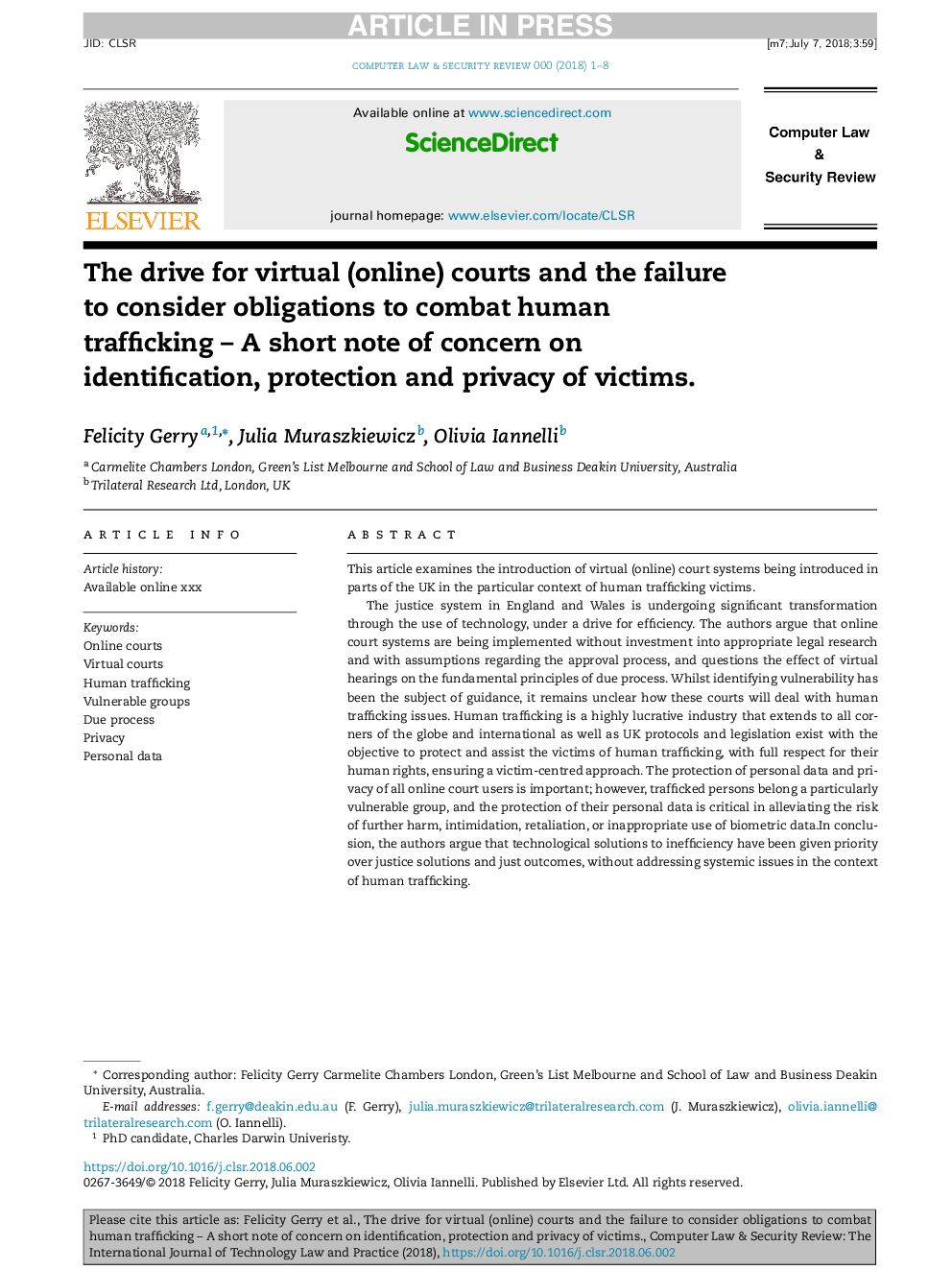| Article ID | Journal | Published Year | Pages | File Type |
|---|---|---|---|---|
| 6890442 | Computer Law & Security Review | 2018 | 8 Pages |
Abstract
Whilst this is a hopeful description of what technology can do for the justice system, this paper seeks to show that perhaps our enthusiasm ought to be restrained until we answer key questions. The authors explore these questions using the example of victims of human trafficking. These persons engage with the justice system in a variety of ways. Some are witnesses to trafficking crimes in a criminal prosecution. Others may themselves be on trial for crimes they were compelled to commit as a result of their trafficking situation. Additionally, they can be party to a civil case, e.g., arising out of an employment situation. In each of these cases there is possibility for the victim to be identified, if they are not already, as somebody who has a right to assistance and support. There is an opportunity for the state to carry out an identification and thus, as explained in this paper, fulfil human rights obligations. What happens when cases go online? There are also serious questions with regard to privacy and data protection and how the implementation of online court processes may act as a barrier to identifying victims of human trafficking. The authors, therefore, advocate for great caution to be used with the introduction of virtual justice and call for additional research to be undertaken in order to gain a clear vision of what the current and future effects of this new system may be.
Related Topics
Physical Sciences and Engineering
Computer Science
Computer Science (General)
Authors
Felicity Gerry, Julia Muraszkiewicz, Olivia Iannelli,
